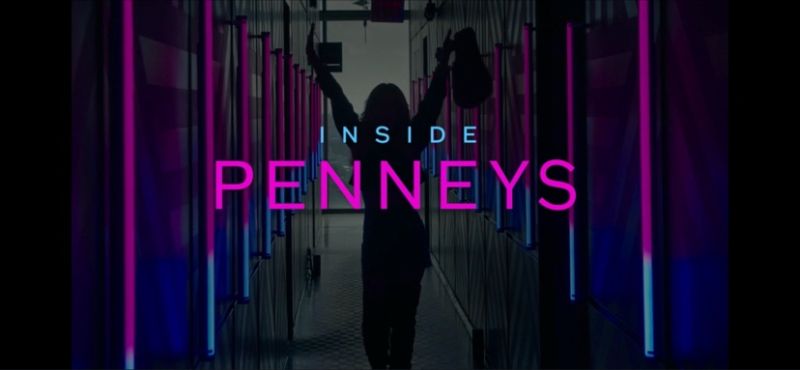Fresh off the back of a year of public-private financial blunders, including revelations of Ryan Tubridy’s secret overpayment, UK-based barter account use, undisclosed free-car deals and a Toy Show Musical money-pit scandal, our public-service broadcaster is back with ‘Inside Penneys’.
During the summer of 2023, Motive Television / RTÉ production teams followed the staff and developments of the “international fashion powerhouse”, documenting the reopening of their Dundrum store, expansions into Milan and the US, store renovations and product ideation. The show promised to take viewers behind the scenes and “spend some time with the people behind this iconic brand”. However, we’re only getting half the story.
The six-part series finished up recently and portrayed the store from two drastically different perspectives. The first, and most critically acclaimed, was through the eyes of its shop-floor “characters”. This followed their lives working for the company: a mother joining her daughter in store, “the bills have to be paid”, recalling funny moments, emotional retirements, support and solidarity among their fellow workers and the occasional remark about hoping to be working somewhere else by the time another birthday rolls around.
We’re mostly led to believe that Penneys is a magnanimous employer, creating wonderful pay and conditions that allow their staff to live happy, comfortable lives. There’s no real criticism of the company, no mention of how staff themselves organised for those conditions, no sign of issues which staff have with the employer currently, nor any telling of the trade union battles involved throughout.
“We were a bit surprised at the whole televised programming of this, I was told by a family member, that’s how I found out.” Mandate’s Assistant General Secretary, Jonathan Hogan, told me of the complete absence of communication from the production team, even though their members are responsible for the company’s celebrated workplace standards. “Our collective agreements with Penneys go back to the 90s, and well before that, ever since then we’ve been collectively bargaining with Penneys – unlike other Irish companies, I have to say. From Mandate’s perspective, it’s our members who are driving that agenda any time those pay and benefit negotiations take place.”
In 2019, more than 5,000 staff with Mandate were forced to take the company to the Labour Court for a measly 3.4 per cent pay increase, after the fashion brand refused to resolve negotiations through the Workplace Relations Commission. In the same year, profits at Penneys rose 8 per cent to €1.06bn. The union is due to conduct surveys with staff this year to begin the latest pay and condition negotiations. Hogan says: “Generally speaking, across retail, one of the big things that needs to be developed would be advance notice of rosters. Better to allow people to plan childcare, to plan study arrangements, and to plan a life outside of work. Work-life balance needs to be improved across the retail sector.”
In the meantime, while one televised staff member attempts to laugh off hitting 20k steps in an average shift, the show cuts to a management team meandering through high-end stores in sunny Milan, Italy. After sipping coffee in the square, they shout “buongiorno!” to welcoming Primark Milan staff, as if Brad Pitt in Inglourious Basterds spent a few years necking Heinomites in UCD on a rugby scholarship.
The second half of the Penneys story is told through the eyes of the higher-ups. The narrative pivots away from the real lives on the ground and instead floats around the millions of euro due to be made with the latest polyester gimmick, where their fashion gurus source (steal) their product ideas and how they can jump on social trends, like being environmentally friendly (greenwashing) or a growing acceptance of LGBTQ+ people (pinkwashing), to make a profit. There’s no mention of who actually makes their stock, what their lives are like, or how this significant part of the business operates.
Are we supposed to believe that their supply chain is now fine and dandy, a decade after 1,134 people were killed in their suppliers’ sweatshop collapse in Bangladesh? The victims’ families are still fighting for justice; the factory owner has still not been tried.
I would love to know what makes Penneys really tick, beyond the celebrity endorsements and Tiktok trends, where their materials are sourced, how their Cambodian and far-east sweatshops play a part in profit margins, but that’s not to be found here. You have to wonder how the Broadcast Authority of Ireland / Coimisiún na Meán allowed these 25-minute fluff pieces to make it to air and why RTÉ paid for it to begin with. Sure what’s another few thousand euro amidst the Tubridy turmoil of 2023.
RTÉ has told us a half-story but that’s unlikely the producers’ fault. They had two options, either tell the harrowing tales of exploited labour in foreign lands, the environmental disaster of the fashion trade and the real trade union organising behind workplace conditions, and likely get completely cut off from access to stores (all while battling a lawsuit from the company itself) or take the cheaper route and pump out commercial spin with full access and hope the charismatic, bright and enthusiastic working-class staff can keep viewers engaged enough until the next ad break. They chose the latter.






